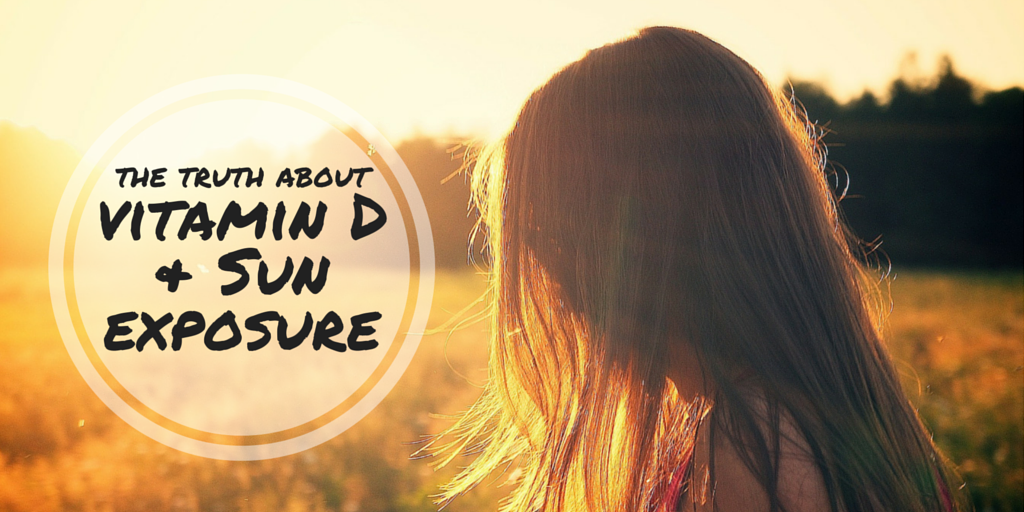
Vitamin D and strong bones
This is the vitamin we have all heard of in relation to strong bones. It is actually a hormone, made from cholesterol. Vitamin D is made in the skin upon exposure to ultraviolet light (UVB rays). Vitamin D deficiency is becoming rife in our society, and it has been linked to numerous other medical problems.
From the skin where it is formed, Vitamin D travels to the liver, where it is converted to a ‘storage’ form. When vitamin D is needed, some of the stored form is transported to the kidneys, where it is converted by an enzyme to a ‘supercharged’ form known as 1,25 D, which is 1000 times more active.
If the diet is high in animal protein, the converting enzyme cannot function effectively and the process of producing 1,25 D is adversely affected. Likewise, those with high levels of stress might be inadvertently affecting their vitamin D levels due to high levels of cortisol, which reduces vitamin D absorption.
Vitamin D is essential for calcium and phosphorus absorption in the gut and its deposition into the bones. If calcium consumption is too high (such as with overuse of chalk-based supplements) it lowers the activity of the kidney converting enzyme, and the levels of 1,25 D fall, indicating that high calcium diets are not necessarily better for us.
Raw plant diets and Vitamin D
About 90% of our vitamin D supplies come from sun exposure, not food. However, certain mushrooms have been shown to have relatively good levels and are used in supplementation regimes. The humble stinging nettle gives a good supply, so put some gloves on and pick some fresh nettles to go in your daily green juice. You may hear that the only food source of vitamin D is from animal products. This is not actually the case – we just have to be a bit more resourceful in where we look. In fact, an interesting study indicated that people following a living-foods, uncooked plant-based diet absorbed and maintained higher levels of vitamin D.
There exists considerable controversy about sun exposure. How many times have we heard that we have to wear at least factor 15 sunblock before we consider venturing outside, even in the UK in winter? We seem to have become so consumed with the fear of malignant melanoma, the most dangerous form of skin cancer, that many of us get insufficient sun exposure to stimulate adequate vitamin D production.
Vitamin D deficiency
It is estimated that half the population of the UK is deficient in vitamin D in the winter, with as many as one in six being classified as severely deficient. Those more at risk are the dark skinned who live too far away from the equator, women who use a traditional religious dress which prevents any exposure of their skin to the sun, and anyone who lives at latitudes greater than 40 degrees north or south of the equator.
Additionally, those living in a polluted environment will have less exposure to UVB, since air pollution blocks some of the UVB rays reaching us. Older people also seem to have a lower rate of production of vitamin D in the skin when exposed to sunlight.
Use some common sense. Do not go out in the sun at midday at the equator and stay there for three hours; build up gradually. After a long winter, expose slowly, for a few minutes a day, if you have very pale skin. Avoid the sun between 11am and 3pm as a general rule. But do expose!
Sunblock and Vitamin D production
Regarding sunblock, avoid chemical sunblocks, since the skin will absorb practically everything you put onto it. Personally I never use sunblock unless I am up a mountain (altitude increases your ‘dose’ of UVB rays), and I am well known for my love of being out in the sun. My favourite form of protection is close-woven cotton clothes, as recommended by the Vitamin D Council.
A final word of warning regarding sun exposure supplying you with adequate vitamin D is that if you shower within 12 hours of the sun exposure, you wash off the oils in the skin that are being converted. New studies even indicate that it could be up to 48 hours before the vitamin D has been absorbed, and most people would certainly have showered by then. The advice therefore would be to go out in the sun early in the day, and not shower until the following morning.
I recommend that anyone concerned about their vitamin D levels, and whether they should be supplementing, get tested for 1,25 D. I advise against indiscriminate supplementation with vitamin D, particularly if you have regular sun exposure. When you take vitamin D, the body creates more vitamin K2-dependent proteins that move calcium around in the body. Without vitamin K2, those proteins remain inactivated, so their benefits are unrealised. This is why, when supplementing, I recommend supplements that contain 1,25 D and K2 together, for the best health benefits. Taken together, these two nutrients keep the calcium in your bones and improve heart health by preventing the arteries and other soft tissues from becoming calcified.
For more information on raw plant diets and natural ways to support your health read Max Tuck’s books Love Your Bones and The Whole Body Solution, and follow @MaxTuck on twitter.
This extract is taken from Love Your Bones, the essential guide to ending osteoporosis and building a healthy skeleton available as ebook and paperback.
Further Reading:
15 Health Benefits of Vitamin D, According to Science (+15 Best Vitamin D Foods)
